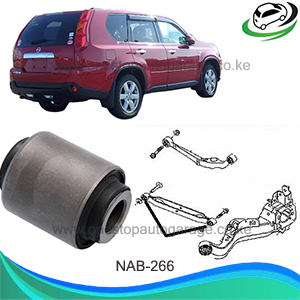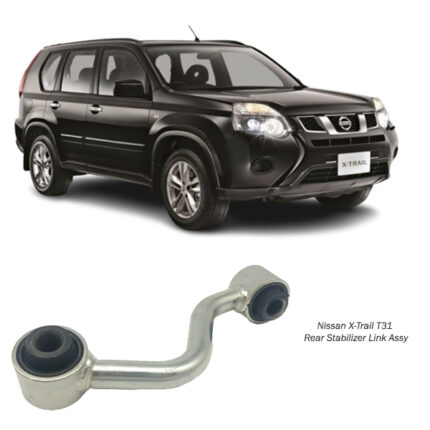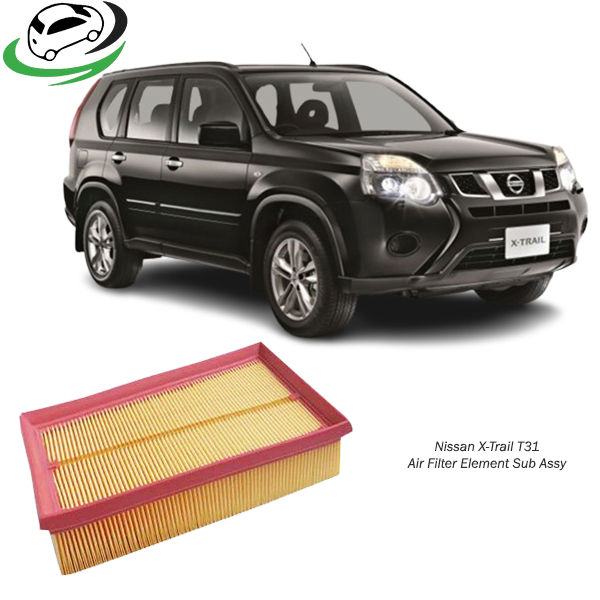-25%
Nissan X-Trail T31 Air Filter Element Sub-Assy 16546-jd20a in Kenya
The air filter element sub-assembly, commonly called an air filter element, is a key part of the vehicle’s intake system. This component plays an essential role in maintaining engine performance and longevity by filtering the air entering the engine. A quality air filter ensures a steady, clean airflow, leading to efficient combustion, fuel economy, and reduced engine wear. In this comprehensive overview, we’ll explore the structure, function, types, and maintenance practices of the air filter element, as well as tips on identifying wear to keep the engine in optimal condition.
1. Overview and Structure of the Air Filter Element Sub-Assembly
The air filter element sub-assembly consists of an air filter element housed in a casing or box, which is connected to the engine’s intake system. This part is designed to filter out contaminants, such as dust, pollen, dirt, and other particles, that may enter the engine through the air intake. Located near the engine’s front or side, the air filter element is easy to access, making regular inspection and replacement convenient.
The construction of air filters varies based on vehicle types and usage. Most filters are made with pleated paper, cotton, or foam materials designed to trap and hold particles. Paper filters are widely used due to their effectiveness and affordability, while higher-performance filters, often made of cotton or synthetic materials, are reusable and can provide enhanced airflow. The filter’s pleated structure maximizes surface area, allowing it to trap more contaminants while maintaining good airflow.
2. Functionality of the Air Filter Element Sub-Assembly
The main purpose of the air filter element is to provide clean air to the engine for combustion. Here’s how it works:
- Air Intake: As the engine draws air, it first passes through the air filter element, which captures contaminants. Clean air is essential because any debris entering the engine can damage components or lead to performance issues.
- Filtering and Trapping Contaminants: The air filter element traps particles as air flows through its pleats. This process prevents contaminants from entering the combustion chamber, protecting components like the pistons, cylinders, and valves from damage.
- Enhanced Combustion Efficiency: With a clean air filter, the engine receives an optimal amount of airflow. A proper air-to-fuel ratio is critical for efficient combustion, ensuring that fuel burns fully and the engine performs smoothly.
- Emissions Control: Clean air supports better combustion, which reduces harmful emissions by ensuring that fuel is efficiently burned, leaving fewer unburned hydrocarbons in the exhaust.
3. Types of Air Filter Elements
The air filter element sub-assembly is available in several types, each with unique materials and designs tailored for different vehicle requirements. Here are the primary types:
- Paper Air Filters: These are the most common type, made from a pleated, high-quality paper material that is efficient in trapping particles. Paper filters are disposable and generally need to be replaced with every service interval.
- Foam Air Filters: Made from polyurethane foam, these filters are designed for high-dust or off-road environments, as the foam can hold larger amounts of contaminants. Foam filters are washable and reusable, but they may not provide the best airflow in high-performance settings.
- Cotton or Gauze Air Filters: These high-performance filters are made from multiple layers of oiled cotton gauze or synthetic fiber, allowing greater airflow and higher filtration efficiency. They are reusable and can be cleaned and re-oiled, making them popular for performance vehicles.
- Synthetic or Polyester Air Filters: With synthetic fibers, these filters provide improved airflow and filtration. They are more durable than paper filters and can be washed and reused, though they are generally more expensive.
- High-Efficiency Particulate Air (HEPA) Filters: Common in air conditioning systems but occasionally used in automotive applications, HEPA filters are highly effective at capturing microscopic particles. However, they are less common in typical vehicle engines due to high airflow restriction.
Each type of air filter offers varying levels of efficiency and airflow, with choices based on the environment and driving style. For instance, off-road or dusty environments benefit from foam filters, while performance cars might benefit from cotton filters for better airflow.
4. Benefits of the Air Filter Element Sub-Assembly
The air filter element sub-assembly provides several benefits for vehicle performance, efficiency, and longevity:
- Improved Engine Performance: By supplying the engine with clean air, the air filter helps maintain the proper air-to-fuel ratio, leading to smoother operation and consistent power output.
- Enhanced Fuel Economy: Clean air filters help engines achieve efficient combustion. When the air filter is clogged, it can restrict airflow, causing the engine to use more fuel to compensate. Thus, a clean air filter contributes to better fuel efficiency.
- Protection Against Contaminants: The air filter prevents harmful debris from reaching the engine. Over time, contaminants can wear down sensitive engine components, but a quality air filter protects these parts, extending engine life.
- Lower Emissions: Proper filtration and airflow help the engine burn fuel more completely, resulting in fewer emissions. This benefit not only helps the environment but also ensures the vehicle complies with emissions regulations.
- Reduced Maintenance Costs: By preventing premature engine wear, a clean air filter reduces the likelihood of repairs and extends the time between major engine maintenance.
5. Maintenance of the Air Filter Element Sub-Assembly
Regular maintenance of the air filter element is essential to ensure optimal performance. Here are some common maintenance practices:
- Inspection: Checking the air filter regularly is essential, especially in dusty or urban environments. Visually inspecting the filter can reveal whether it is clogged or dirty.
- Replacement Schedule: Most paper air filters should be replaced every 12,000 to 15,000 miles, though this interval may vary based on the vehicle type and environment. High-performance filters may last longer but still need regular cleaning.
- Cleaning Reusable Filters: Cotton, foam, and synthetic air filters are reusable. They should be cleaned according to the manufacturer’s instructions, which typically involves washing with a mild cleaning solution and, if applicable, re-oiling.
- Sealing and Proper Installation: A properly installed air filter ensures that no unfiltered air bypasses it. Always ensure the air filter is seated correctly in its housing to prevent gaps where dirt can enter.
- Avoiding Over-Oiling: For cotton or gauze filters that require oiling, avoid using excessive oil, as this can clog the filter or even interfere with air intake sensors in modern vehicles.
6. Signs of a Worn or Clogged Air Filter
A clogged or worn air filter can negatively impact the engine’s performance. Common symptoms of a dirty air filter include:
- Reduced Fuel Efficiency: A clogged filter restricts airflow, leading the engine to use more fuel to compensate for the lack of oxygen.
- Poor Acceleration: When an air filter becomes dirty, it limits the airflow, which can reduce engine power and acceleration.
- Black Smoke from Exhaust: If the air filter restricts airflow, the engine may burn more fuel than necessary, leading to unburned fuel exiting through the exhaust, causing black smoke.
- Engine Misfires: Dirty filters can cause an imbalance in the air-fuel mixture, leading to engine misfires and rough idling.
- Unusual Engine Sounds: A clogged air filter can cause whistling or unusual noises due to restricted airflow.
These signs indicate that it’s time to inspect and possibly replace or clean the air filter element to maintain performance and efficiency.
7. Environmental Impact and Importance of the Air Filter Element Sub-Assembly
The air filter element sub-assembly plays an important role in reducing emissions and environmental impact. By ensuring clean air enters the engine, it helps the vehicle burn fuel more efficiently, producing fewer pollutants. Regularly replacing or cleaning air filters can reduce fuel consumption and lower the vehicle’s carbon footprint.
8. Conclusion
The air filter element sub-assembly is essential to the health and performance of an engine. By filtering contaminants, it protects sensitive engine components, enhances fuel economy, and improves overall engine efficiency. Regular inspection, replacement, or cleaning of the air filter element should be a priority for any vehicle owner. With proper maintenance, an air filter element sub-assembly can extend the life of the engine, reduce emissions, and provide a smoother driving experience, making it a small but significant component in vehicle maintenance.
Follow us on Facebook for more parts.



